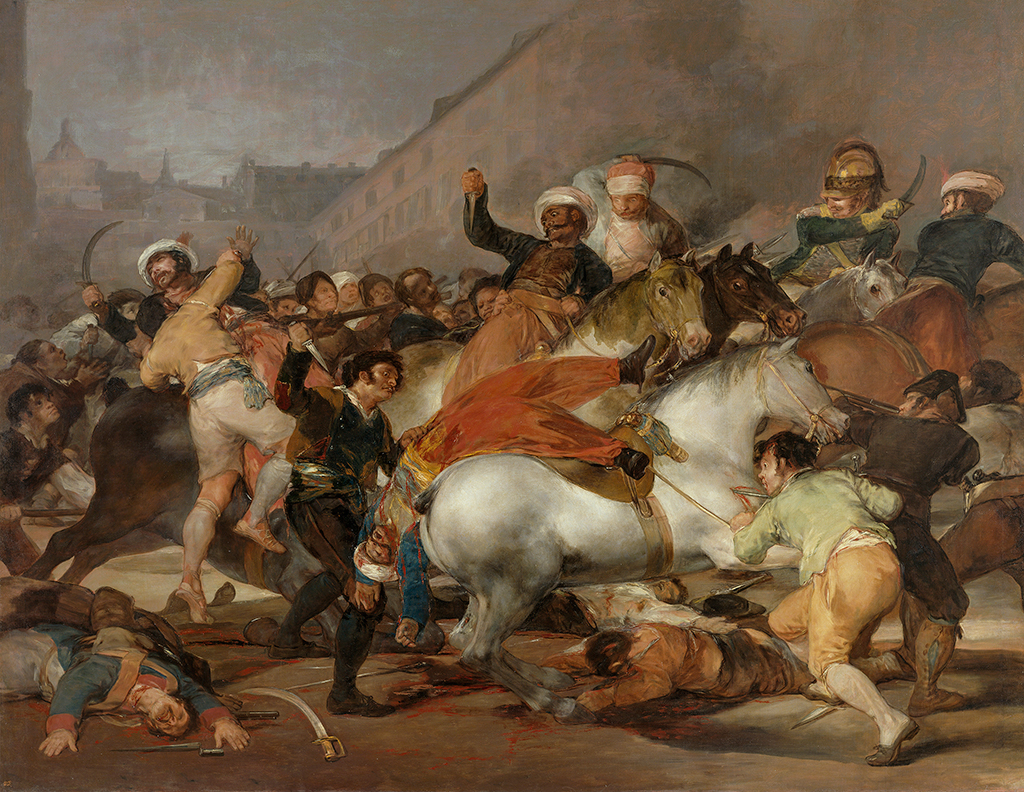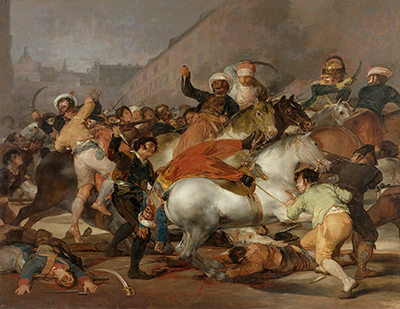Francisco Goya's painting The Second of May 1808 also goes by another name reflective of the historical event being depicted, which is The Charge of the Mamelukes.
Completed in 1814, this painting is part of a pair of paintings with the companion painting titled The Third of May 1808. This set of paintings depicts one of the numerous rebellions by the Spanish people during France's occupation of the country during the Peninsular War.
These uprisings were sparked when attempts were made to remove members of Spain's royal family from the throne in Madrid. The Spanish people attacked the Mamelukes, which were Turkish soldier's in Napoleon's forces.
The uprisings lasted for two days before being suppressed again by the leaders of the French occupancy. The Peninsular War lasted from 1807 to 1814 as part of the Napoleonic Wars that were fought for control of the Iberian Peninsula between the allied powers of Spain, Britain and Portugal against Napoleon's French empiric army from 1803 to 1815.
Francisco Goya lived through the time of French occupancy in Spain as that is where he was born and where he resided for most of his life. In the early 1790s, Goya lost his hearing as a result of an unknown illness or head trauma, possibly from a stroke or lead poisoning. Whatever the cause, it caused Goya to become more introverted and changed the tone of his paintings. Goya also experienced a physical and mental breakdown around the same time as the French occupancy of Spain began, which also affected how and what he painted. The companion paintings of the rebellions by the people were a means for Goya to express his emotions and to process the violent and unfortunate events. While he may not have seen the uprisings firsthand, he nevertheless witnessed this significant time in Spain's history. Art historians consider Goya's The Second of May 1808 to reveal his opposition to the violence that arose out of the Peninsular War and the uprisings on this significant day.
The Second of May 1808 is not only notable for its record of an historical event, but also because of its appearance and meaning. As stated before, Goya's paintings took on a different tone around this time. They became darker and more violent in accordance with the Peninsular War and Goya's health. Goya claimed these misfortunes helped his art become more personal and insightful. In this particular painting, Goya demonstrates the chaos of the fight by avoiding focus on one particular subject. He also demonstrates the power of Spain's citizens and their ability to rebel even if it wasn't necessarily a success right away. The different types of people in the painting can be distinguished by their attire: the Mamelukes are riding the horses and have the wraps on their heads; the few French soldiers have their blue and red jackets and white bottoms; and, the Spanish citizens are wearing various other outfits. There are already numerous casualties seen on the ground and the action in the painting predicts there will be more.
Goya was commissioned by the governing council of Spain in 1814 to create paintings depicted these events. This council was in charge until Ferdinand VII returned. Because Goya's representation of the Spanish people is positive and almost heroic, Ferdinand VII did not like it. It demonstrated how average citizens could take on a professional army. The Second of May 1808 was not hung publicly for many years. However, it has come to be very popular and appreciated since because of its symbolism and historical significance. Today, the companion paintings can be found in the Museo del Prado in Madrid, Spain.





